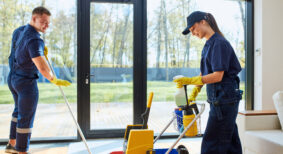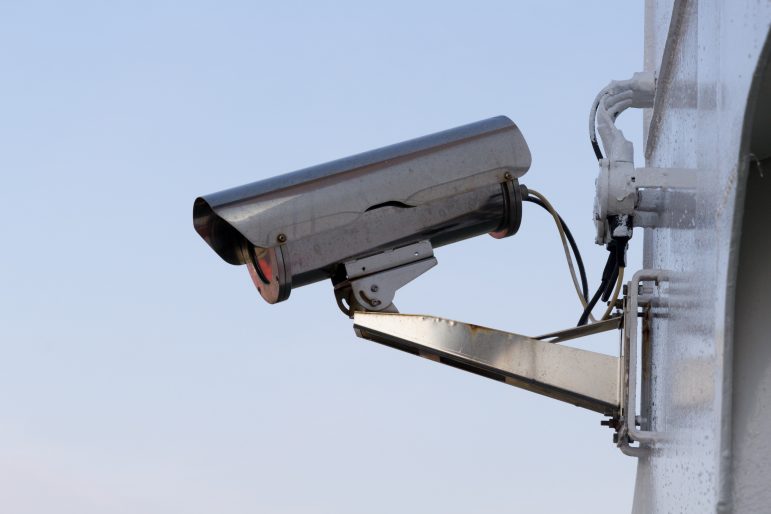In April 2020, a chemical manufacturer had to make the hard decision to close shop during the pandemic. While most of the office workers could continue working remotely, for the more than 200 people working in the company’s six laboratories, there were few options. These people needed to be in one of these laboratories to conduct their work.
And that’s not all.
The facility has a large warehouse distribution centre with several loading docks. They receive raw materials and deliver finished products to their distributors throughout the day. These areas also had to be closed.
But that was a year ago.
Now, they are in the process of reopening, and administrators realize they are dealing with several challenges that did not exist a year ago. Further, the firm is in Illinois, and in many parts of the U.S., 2020 was a politically and socially tumultuous year. The “fire” behind these many issues may have simmered, but that does not mean they have been blown out entirely.
Because of these and many additional issues, the chemical manufacturer decided to call in a corporate security consulting and risk management firm to help them as they reopened.
The goals: to open safely to protect their staff, their facility, and their data.
Many of the steps the manufacturer took apply to all types of facilities and industries. The firm hired was TAL Global, headed by Johnathan Tal, formerly a counterterrorism expert in Israel. His 25-year-old firm is well-respected in the fields of facility security, investigations, and executive protection.
What were the first steps you took when you started working with this client?
Tal: We asked them if they had any future facility security plans. Many times, organizations are aware of security issues they need to address; they just have not implemented them. At this point, they may know their [security] vulnerabilities better than anyone. Our job then is to analyze them and determine which should be addressed first.
Was this true with this client?
Tal: Yes. One of their plans — updating the camera security systems around the facility — we suggested had to be addressed first. The manufacturer still had analog security cameras. These cameras have limitations that have been rectified with digital cameras. Images using digital cameras can be viewed in real time on a multitude of screens. Analog systems do not have that capability. Further, digital usually has far clearer pictures, zoom functions, and other advantages.
In general, however, we must remember that security cameras do not necessarily prevent a malicious character from acting. They just can help spot and identify that person in action.
You mentioned you advised them to update their staff card and badge readers. What did this entail?
Tal: The facility has about 350 workers, yet more than 3,000 badges are listed in the card reader system. That means people no longer working for the company may still have access to the building with their badge. In other words, the system may still recognize them as an employee. The entire system had to be updated. New badges were issued to all staff members, deactivating the old badges. The new system can be easily updated and uses “smart technology” to notify administrators of any suspicious entry anywhere in the building.
Further, smart technology tells our client many more things. For instance, it indicates when and which buildings are most used, least used, and not used. With this information, HVAC systems and lighting can be adjusted accordingly to save energy.
Describe the “perimeter” security you suggested for the manufacturer.
Tal: This company is in an industrial complex. They did not have walls or fencing around their building. Further, someone could just drive in and park anywhere around the building. We advised them to install fencing surrounding the entire facility along with entry security gates. Staff and visitors must now travel through these gates to enter the property. Either they use their badge for entry, or they use an intercom system to enter.
What about the loading docks specifically? After the FedEx incident, this must be a bigger concern.
Tal: The FedEx incident that happened in April 2021 in Indianapolis was a significant wake-up call for all types of distribution centres and organizations.
We advised the client to create a command centre staffed by remote security personnel. The command centre can monitor everyone entering and leaving the property at the loading docks and anywhere on the property. Further, we suggested that staff and visitors travel through a second security gate system as they approach the loading docks. This two-step authorization system further enhances security.
In addition, the loading docks previously were open 24 hours per day. While the client wants their staff to receive deliveries as soon as they arrive, for security reasons, we suggested the loading docks only be open at certain times of the day for a set number of hours. This allows the command centre to better stay on top of who is arriving and who is departing.
Hiring the extra security personnel for the command centre can make this a more costly option, but the administrators realized it was one they had to implement.
What COVID-specific security steps did you advise your client to implement?
Tal: To protect everyone’s health, the client wanted to insist that everyone have proof of being vaccinated. However, this could lead to legal issues that have yet to be ironed out. What we advised them to implement quickly is the following:
- Develop a messaging campaign to encourage staffers to be vaccinated and promote the vaccines’ safety and effectiveness.
- Provide free COVID-19 testing for all employees.
- Install temperature check systems at all entries. These systems use a thermal camera to take one or more employee’s temperatures at one time. Other devices, such as “touch” and handheld systems, can also be used to perform temperature checks quickly.
- Analyze and evaluate cleaning and sanitizing procedures.
- Reconfigure the workplace so that there is more social distancing between staff and plastic shields are installed.
Finally, we advised this client to give us a seat at the table regarding building safety, health, and operations. The post-COVID-19 era is likely to be ever-evolving. It will require ongoing vigilance to protect staff and visitor health and keep the doors open and the facility operating.
Robert Kravitz is a frequent writer for the facility management industry.








